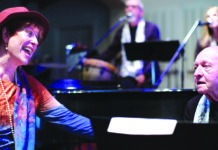So many of us learn to ride bicycles as part of the ritual of growing up. We enjoy the new-found freedom a bike brings, and in time our bikes become our primary mode of transportation. Later, some learn to have fun in the BMX world or explore other terrain via mountain bikes, while still others continue to ride as adults, commuting and eventually teaching their kids. It’s an endless cycle of fun, recreation and tradition all wrapped into what we now call alternative transportation.
Bicycles have been an important component of economies and transportation for 150 years. Although the bicycle itself has changed little since its introduction around 1870, it has evolved in some interesting ways. The use of exotic metals to make bikes lighter and faster, disk brakes, unusual frame geometry, shock absorbers, electric motors and bike-share programs are just some of the recent improvements.
Today, more than 109 million bikes are produced annually worldwide. As cities look to reduce congestion and improve qualities of life, bicycles are becoming an essential component to the equation. They offer an affordable, pollution-free solution that also has enormous health benefits. Here are a few examples of bicycle use other than pure recreation:
- Beach cruisers:Due to the Great Depression, bicycle sales, then considered a luxury item, dropped off heavily. In an effort to go after the youth market, Schwinn introduced the cruiser style bike, with a heavier frame and balloon tires. The style really took hold in the 1940s and 50s, as they became the vehicle of choice for paperboys and couriers. When lighter, more nimble bikes with gears from Europe took hold in the 60s, cruiser bikes again fell out of favor.
- Mountain bikes, BMX:In northern California, cruisers were used to race downhill for pure joy. When Joe Breeze and Gary Fischer started modifying them with gears and better brakes in the early 1970s so that they could ride uphill as well as down, modern mountain biking was born. Bicycle motorcross – BMX – soon followed. Mountain biking is now enjoyed by millions around the world, and in 1996 was added to the Olympics. Besides the sporting aspect, mountain bikes are an environmentally friendly way for park visitors to cover more ground than hiking and explore a larger range of wilderness areas, without adding to pollution and congestion.
- Pedicabs:Cycle rickshaws, or pedicabs, are pedal-powered passenger transport vehicles. Initially very popular in Asia, they can be seen in cities throughout the world as an environmentally friendly and entertaining form of transit. San Diego now has a very popular program in place, serving its downtown areas, helping to eliminate congestion and provide a boost to the tourist economy as well.
- Electric-assist bikes:Electric bikes allow riders to utilize a small onboard motor to help them ride uphill, carry cargo and enjoy longer rides. The motors generally run off a battery pack that can be plugged into any outlet. This convenience allows a wider segment of the population to experience riding in urban environments. Some of the benefits include: saving money, protecting the environment, more exercise and easier parking. Electric-assist bikes come in many sizes and styles and are helping reduce congestion and encouraging more physical activity. The Copenhagen Wheel is a new invention that converts any bicycle to an electric-assist bike by simply swapping out the rear wheel.
- Bike Sharing Programs
First started in Amsterdam in the 1960s, bike-sharing programs are becoming more popular throughout the world today. Often called “community bikes” or “public bikes,” the programs usually consist of a public entity or municipality making available a number of bikes for public use, often for a small fee. The programs allow more users to leave their cars behind and travel throughout a small urban area by bike. Portland, Denver, Chicago and Washington, D.C. are just some of the cities in the United States that have successful programs. They allow residents and tourists alike to make short trips while encouraging physical activity, reducing congestion and curbing pollution.
The new Expo Line station in Culver City is scheduled to included a mobility center, but it has yet to be determined if it will also include a hub for a bike-sharing program or not. Just imagine visitors taking the Expo Line to Culver City, checking out a bike at the mobility center and making the short ride to Town Plaza, where they can safely park the bike, see a movie and have lunch before heading back, without the use of adding congestion to our city. It’s a wonderful vision.
Bike Safe, Bike Smart! is a weekly column to promote responsible cycling by providing information, education and advice about riding. It’s written by members of the Culver City Bicycle Coalition (CCBC), a local chapter of the Los Angeles County Bicycle Coalition. Join them for their family bike ride, the last Sunday of every month. For more information and to submit your questions, write: ccbicyclecoalition@gmail.com, and visit their blog: culvercitybc.wordpress.com/.













